Cultural Immersion: How to Experience Real Dominican Traditions Outside the Resorts
Understanding Dominican Culture and Traditions
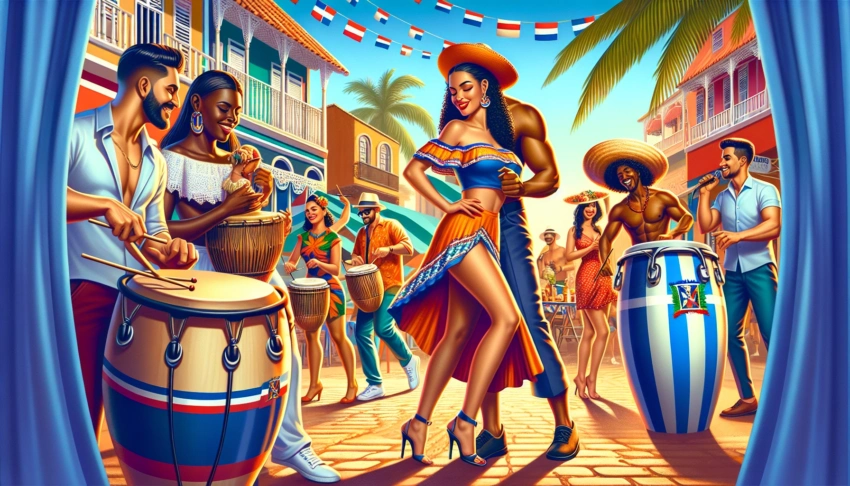
Cultural Immersion: How to Experience Real Dominican Traditions Outside the Resorts
The Dominican Republic is a vibrant tapestry woven from a rich history, diverse influences, and lively traditions. This Caribbean paradise is more than just sun-kissed beaches and luxury resorts; it’s a cultural melting pot that invites you to explore its heart and soul.
1. Historical Influences on Dominican Culture
The Dominican Republic’s cultural landscape has been shaped by a confluence of indigenous, Spanish, African, and Taino influences. These elements have merged over centuries to create a unique identity that is distinctly Dominican yet universally appealing.
Indigenous Roots: The Taino people, the island’s first inhabitants, left an indelible mark on Dominican culture. While much of their way of life was lost due to colonization, remnants like language, art, and agricultural techniques persist. Words such as “canoa” (canoe) and “hamaca” (hammock) are Taino in origin and still used today.
Spanish and African Contributions: The arrival of the Spanish in the late 15th century introduced new religious, culinary, and architectural influences. African slaves brought to the island added a rich layer of music, dance, and cuisine. This blend is evident in the lively rhythms of merengue, a dance with both African beats and Spanish melodies.
Amidst these influences, the Dominican Republic has cultivated a vibrant culture that pulses with energy, creativity, and warmth. Whether it’s the infectious music, flavorful food, or the art of storytelling, the Dominican spirit shines bright.
2. Language and Communication
Language is the heartbeat of Dominican culture, and Spanish is its primary pulse. However, the Dominican Republic’s linguistic landscape is as colorful as its people, featuring local dialects and unique expressions that set it apart from other Spanish-speaking nations.
The Dominican Spanish is known for its fast pace, colloquial slang, and a distinctive rhythm that reflects the country’s lively temperament. Phrases like “¿Qué lo qué?” (What’s up?) and “¡Dime a ver!” (Tell me!) pepper conversations, showcasing the friendly and open nature of the people.
Language as Cultural Expression: Beyond mere communication, language in the Dominican Republic is a means of cultural expression. Through proverbs, songs, and poetry, Dominicans convey wisdom, humor, and values. Embracing the local language allows for a deeper connection with the people and their way of life.
3. Religious and Spiritual Practices
Religion plays a significant role in Dominican life, with a majority of the population identifying as Roman Catholic. The influence of Catholicism is evident in the country’s festivals, architecture, and daily practices. Churches like the Cathedral of Santa María la Menor in Santo Domingo stand as testaments to this enduring faith.
Syncretic Practices: Dominican spirituality is a fascinating blend of Catholic beliefs and African traditions. This syncretism is particularly visible in practices such as Vudú (often misunderstood but rich in cultural significance), where saints and spirits coexist in harmony.
These religious and spiritual practices offer a window into the Dominican soul, revealing a people who are deeply connected to their faith, ancestors, and community. By understanding these elements, you gain insight into the resilience, joy, and passion that define the Dominican Republic.
Engaging with Local Communities
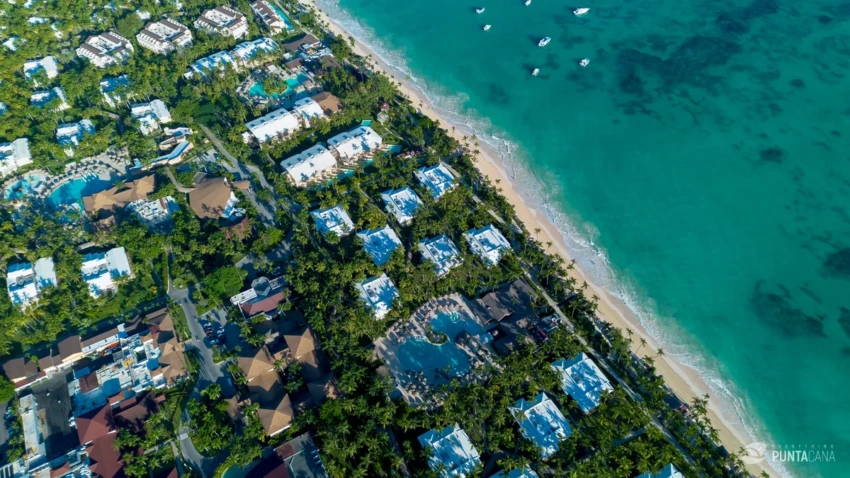
Aerial view of Punta Cana
To truly immerse yourself in the vibrant culture of the Dominican Republic, stepping outside the all-inclusive resorts and into the heart of local communities is a must.
From bustling markets filled with lively chatter to the rhythm of merengue echoing through the streets, engaging with local communities offers a window into the soul of the Dominican people. Let’s explore some captivating ways to connect with locals and enrich your travel experience.
1. Participating in Community Festivals
Nothing captures the essence of Dominican culture quite like its festivals. These celebrations are a colorful tapestry of music, dance, and tradition that bring communities together in joyous harmony.
Every year, towns across the country host vibrant festivals that honor religious figures, historical events, or local legends. One of the most famous is Carnaval, celebrated in February, where towns like La Vega explode with parades of costumed dancers, intricate masks, and lively music. The streets come alive with a kaleidoscope of colors, and visitors are welcomed to join in the revelry.
For a more spiritual experience, visit the Feast of Our Lady of Altagracia in January, the patroness of the Dominican Republic. Pilgrims gather in the city of Higüey to pay homage, offering a unique opportunity to witness the deep religious devotion of the locals. These festivals are not just events to observe but invitations to participate, dance, and celebrate alongside Dominicans.
2. Volunteering Opportunities
While festivals offer a glimpse into the celebratory side of Dominican culture, volunteering provides a meaningful way to give back to the communities you visit. From teaching English to children to participating in environmental conservation projects, there are numerous ways to get involved.
Several organizations, such as the Dominican Republic Education and Mentoring Project (DREAM Project), offer programs that allow travelers to contribute to local education initiatives. Engaging in these projects not only helps you connect deeply with the people but also leaves a lasting positive impact on the community.
For those passionate about the environment, consider volunteering with Grupo Jaragua, which focuses on biodiversity conservation and sustainable development. It’s a chance to work in breathtaking natural settings while promoting ecological awareness among locals and visitors alike.
Our Best Tours in Punta Cana
Explore our curated selection of tours that offer unique opportunities to engage with local communities, participate in cultural festivals, and join impactful volunteering projects. Discover the Dominican Republic beyond its beaches and resorts.
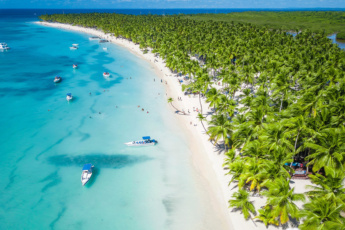
Saona Island Excursion - Caribbean Paradise
from $75 Read more
Swimming with Dolphins in Punta Cana - Top Adventure 2025 (50 minutes)
from $149 Read more3. Home Stays and Family Visits
The ultimate way to experience Dominican culture is to live it firsthand through a homestay or family visit.
Staying with a local family offers unparalleled insights into daily life, customs, and traditions. You’ll have the chance to enjoy home-cooked meals, learn to prepare traditional dishes, and perhaps even pick up a few dance moves from your hosts. This immersive experience fosters connections that often turn into lifelong friendships.
In rural areas, programs like Hostel Rural provide opportunities for travelers to stay in community-run accommodations, supporting local economies while gaining authentic cultural experiences. Whether you’re learning to make mangu for breakfast or practicing Spanish with your host family, these interactions create cherished memories and a deeper appreciation for Dominican culture.
Exploring Dominican Gastronomy
The Dominican Republic, a culinary paradise, offers a tantalizing blend of flavors that bear the marks of its diverse cultural influences. From savory street food to traditional dishes that have been passed down through generations, the country’s gastronomy is a flavorful invitation to explore its rich heritage.
1. Traditional Dominican Dishes
When it comes to traditional Dominican dishes, the island nation does not disappoint. The Dominican Republic’s cuisine is a delightful fusion of indigenous Taino, Spanish, and African influences, resulting in a unique culinary identity. Let’s embark on a culinary journey and explore some must-try dishes that encapsulate the essence of Dominican flavors.
- Sancocho: This hearty stew is a national treasure, often served during special occasions. It’s made with a variety of meats, root vegetables, and spices, simmered to perfection. Sancocho is not just a meal; it’s an experience that brings families together.
- Mangu: A breakfast staple, Mangu consists of boiled and mashed plantains typically served with eggs, fried cheese, and salami. It’s a comfort food that energizes Dominicans for the day ahead.
- La Bandera Dominicana: Translating to “The Dominican Flag,” this dish consists of rice, red beans, and meat, usually accompanied by a salad. It’s a daily staple that reflects the colors of the Dominican flag and the heart of Dominican households.
2. Local Markets and Street Food
To truly savor the flavors of the Dominican Republic, one must delve into its vibrant local markets and bustling street food scenes. These culinary hubs offer an authentic taste of Dominican life, where the air is filled with the aroma of fresh produce and sizzling street snacks.
- Mercado Modelo in Santo Domingo is a bustling market where you can find a variety of local produce, spices, and traditional foods. It’s a great place to engage with vendors and learn about the ingredients used in Dominican cooking.
- Chimichurri Burger, affectionately known as “Chimi,” is a popular street food item. This Dominican-style burger, complete with a seasoned meat patty, cabbage, and a tangy sauce, is a must-try for street food enthusiasts.
- Don’t miss out on Empanadas, crispy pastries filled with beef, chicken, or cheese. These handheld delights are perfect for a quick, flavorful bite as you explore the streets of Santo Domingo or Punta Cana.
3. Cooking Classes with Locals
For those eager to bring a piece of the Dominican Republic back home, participating in local cooking classes offers an immersive experience. These classes not only teach you how to make traditional dishes but also provide insights into the cultural significance of each recipe.
Many locals open their homes to tourists, offering a hands-on approach to learning. Imagine crafting a perfect Sancocho under the guidance of a seasoned Dominican cook, all while hearing stories of family traditions and culinary secrets passed down through generations. These cooking classes are more than just lessons; they are cultural exchanges that enrich your understanding of Dominican life.
Traditional Dominican Dishes: A Culinary Guide
| Dish | Description | Occasion | Key Ingredients |
|---|---|---|---|
| Sancocho | A hearty meat and vegetable stew | Special occasions | Beef, chicken, root vegetables, spices |
| Mangu | Mashed plantains served with sides | Breakfast | Plantains, eggs, cheese, salami |
| La Bandera Dominicana | Rice, beans, and meat dish | Daily staple | Rice, beans, chicken or beef |
Exploring Dominican gastronomy is a journey through the nation’s history, culture, and traditions. Whether you’re sampling street food or learning to cook a local dish, each bite tells a story of the island’s vibrant heritage. So, come hungry, and leave with a heart full of new experiences.
Discovering Dominican Music and Dance
Immerse yourself in the vibrant rhythm and soul-stirring beats of the Dominican Republic, where music and dance are more than just entertainment—they’re a way of life. From the lively streets of Santo Domingo to the sandy shores of Punta Cana, you’ll find a pulsating energy that beckons you to join in the celebration of culture and tradition.
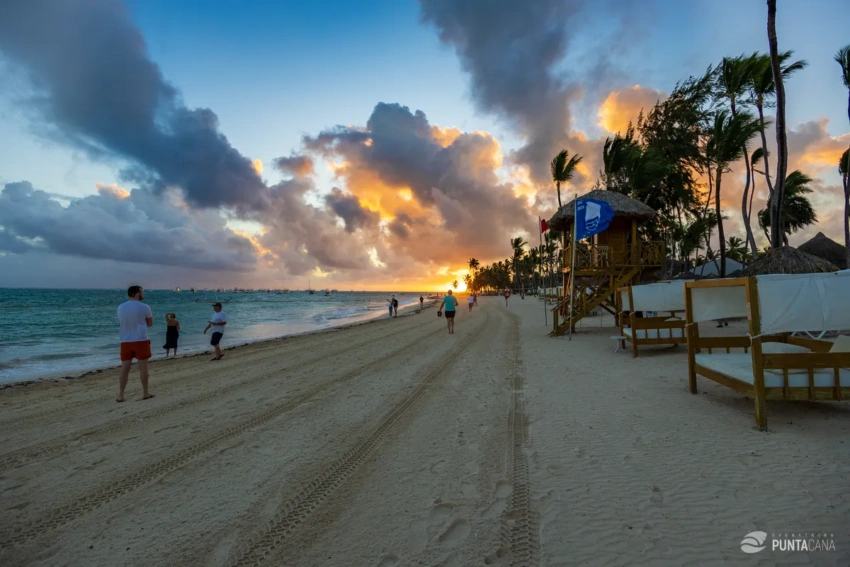
Punta Cana
1. The Origins of Merengue and Bachata
The Dominican Republic is the birthplace of two of Latin America’s most infectious music genres: Merengue and Bachata. These genres not only tell the story of Dominican history but also encapsulate the spirit of its people. Merengue, with its fast-paced rhythm, is considered the national dance and is said to have originated in the mid-19th century. It reflects a blend of African and European musical elements, and its lively tempo is impossible to resist.
Bachata, on the other hand, emerged in the rural neighborhoods of the Dominican Republic in the early 20th century and was initially considered the music of the lower class. Today, it has gained international popularity, capturing hearts with its romantic melodies and themes of love and heartbreak. If you want to truly understand the Dominican soul, let the music of Merengue and Bachata guide you through its history and emotions.
2. Dance Classes and Workshops
Eager to learn the moves and rhythms that define Dominican dance? Participating in local dance classes or workshops is a fantastic way to dive into the culture. Many local studios and cultural centers offer classes for visitors of all skill levels. Imagine learning the steps of Merengue in a vibrant community setting, where laughter and music fill the air. Not only will you learn the dances, but you’ll also gain insight into their cultural significance and the stories they tell.
These classes often go beyond mere dance instruction. They provide a cultural exchange, where locals and visitors connect through the universal language of music and movement. As you sway to the beat, you’ll feel a deeper connection to the heart of the Dominican Republic.
Our Best Dance Classes in Punta Cana
Looking to book an unforgettable dance experience in Punta Cana? Explore our exclusive selection of dance classes that offer a unique blend of culture and fun. Perfect for travelers looking to immerse themselves in Dominican traditions.
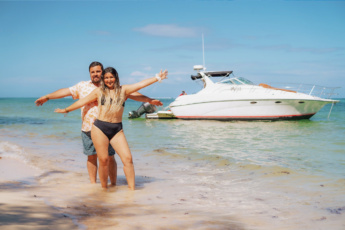
Punta Cana Private Boat Trip at the Best Price - 3-Hour Exclusive Tour with Snorkeling (from Jellyfish to Cabeza de Toro)
from $590 Read more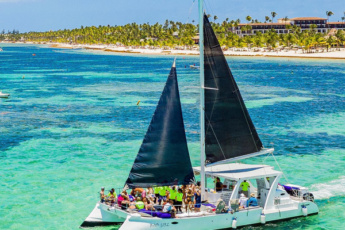
Power Cruise – Punta Cana Party Experience on the Bad Girl Catamaran
from $65 Read more3. Live Music Venues and Performances
The Dominican Republic is alive with music, and there’s no better way to experience this than by visiting local live music venues. Whether you’re in the bustling city or a quaint coastal town, you’ll find a variety of spots where the sounds of Merengue and Bachata fill the night air. Santo Domingo, in particular, is renowned for its vibrant music scene, with venues like Jet Set Club and Casa de Teatro offering weekly live performances.
For a more intimate experience, venture to smaller bars and cafes where local musicians play, offering a raw and authentic taste of Dominican music. These performances are not just about the music; they’re about the shared experience, the spontaneous dancing, and the communal joy that defines Dominican hospitality.
Allow the rhythms of the Dominican Republic to guide you through a cultural journey like no other. Whether you’re dancing the night away or tapping your feet to a heartfelt Bachata tune, you’ll leave with memories that resonate with the rhythm of this vibrant island nation.
Outdoor Adventures with a Cultural Twist
Get ready to embark on a journey that combines the thrill of outdoor adventures with the rich tapestry of Dominican culture. These experiences promise not only an adrenaline rush but also a deeper connection to the traditions and customs that thrive outside the resort walls.
1. Eco-Tours and Nature Reserves
Imagine hiking through lush rainforests while a knowledgeable guide shares tales of the Taino people and their harmonious relationship with nature. Eco-tours in the Dominican Republic offer a unique blend of adventure and education. Visit places like Los Haitises National Park, where you can explore mangroves and ancient caves adorned with Taino petroglyphs. These tours not only showcase the country’s breathtaking biodiversity but also provide insights into the traditional uses of local flora and fauna.
Opt for a guided hike in the Dominican countryside, and you’re likely to encounter locals who still practice age-old traditions. The guides often incorporate stories about how their ancestors used specific plants for medicinal purposes or rituals. It’s an adventure that enriches both the mind and the soul.
2. Traditional Fishing and Farming Techniques
Fishing and farming are more than just sustenance methods in the Dominican Republic; they are cultural cornerstones passed down through generations. Join a local fishing expedition on a traditional wooden boat, known as a “yola,” and experience the thrill of catching your dinner the old-fashioned way. The seasoned fishermen are not only adept at their craft but also eager to share tales of the sea and the traditions that have kept their communities thriving.
For those more inclined towards terra firma, participating in a farming experience can be equally rewarding. Many rural communities offer tours that allow visitors to get hands-on with traditional farming techniques. Learn about the cultivation of staples like plantains, yucca, and coffee, and gain an understanding of the agricultural practices that have shaped Dominican culture.
3. Cultural Significance of Dominican Landscapes
The landscapes of the Dominican Republic are not just backdrops for adventure; they are deeply intertwined with the nation’s cultural identity. From the towering peaks of the Cordillera Central to the serene beaches of the Samaná Peninsula, each landscape holds a special place in the hearts of Dominicans.
Consider embarking on a journey to Pico Duarte, the highest mountain in the Caribbean. The trek itself is a rite of passage for many locals and offers a profound connection to the land and its history. Along the way, guides often share how the mountains have influenced local folklore and spiritual beliefs.
Understanding the Role of Geography in Dominican Culture
| Landscape | Cultural Influence | Activities |
|---|---|---|
| Cordillera Central | Spiritual and Folklore Traditions | Hiking, Cultural Tours |
| Los Haitises National Park | Taino Heritage | Eco-Tours, Cave Exploration |
| Samaná Peninsula | Community and Fishing Practices | Beach Activities, Fishing Expeditions |
Outdoor adventures in the Dominican Republic are not just about thrills; they are an invitation to experience life as the locals do. By stepping off the beaten path, you open the door to understanding the cultural riches that make this island a tapestry of tradition and natural wonder.
Frequently Asked Questions
What are some authentic cultural experiences to have in the Dominican Republic outside of resorts?
To truly immerse yourself in Dominican culture, consider visiting local markets, attending a traditional merengue or bachata dance event, participating in a cooking class to learn about Dominican cuisine, or exploring small towns like Jarabacoa or Constanza to experience local life.
How can I find local festivals or events to attend in the Dominican Republic?
Research online for festival calendars or check with local tourism offices for upcoming events. Popular festivals include the Carnival in February and the Merengue Festival in July. Engaging with locals can also provide insider tips on smaller, lesser-known celebrations.
Is it safe to travel outside the resorts in the Dominican Republic?
Traveling outside resorts can be safe if you take common-sense precautions. Avoid traveling alone at night, keep your belongings secure, and stay informed about local conditions. It’s also recommended to use reputable transportation services.
What are some traditional Dominican foods to try?
Try dishes like mangu (mashed plantains), sancocho (a hearty stew), or mofongo. Don’t miss out on street food such as chimichurri (Dominican burger) and empanadas.
How can I respectfully interact with locals while exploring Dominican culture?
Show respect by learning a few basic Spanish phrases, dress modestly depending on the setting, ask permission before taking photos, and be open and friendly. Being courteous and showing interest in their culture can lead to meaningful interactions.
What should I wear when visiting local communities in the Dominican Republic?
Dress comfortably but modestly, especially in rural areas or when visiting religious sites. Lightweight, breathable clothing is ideal due to the tropical climate. Always respect local customs and dress codes.
Are there any local customs or etiquette I should be aware of?
Dominicans value politeness and greetings are important. A friendly “Hola” or “Buenos días” goes a long way. When invited to someone’s home, it’s customary to bring a small gift. Avoid discussing sensitive topics like politics unless you know the person well.
How can I ensure that my visit positively impacts the local community?
Support local businesses by shopping at markets, eating at local restaurants, and hiring local guides. Consider participating in community-based tourism projects that benefit residents directly. Always be mindful of the environment and respect cultural heritage sites.
